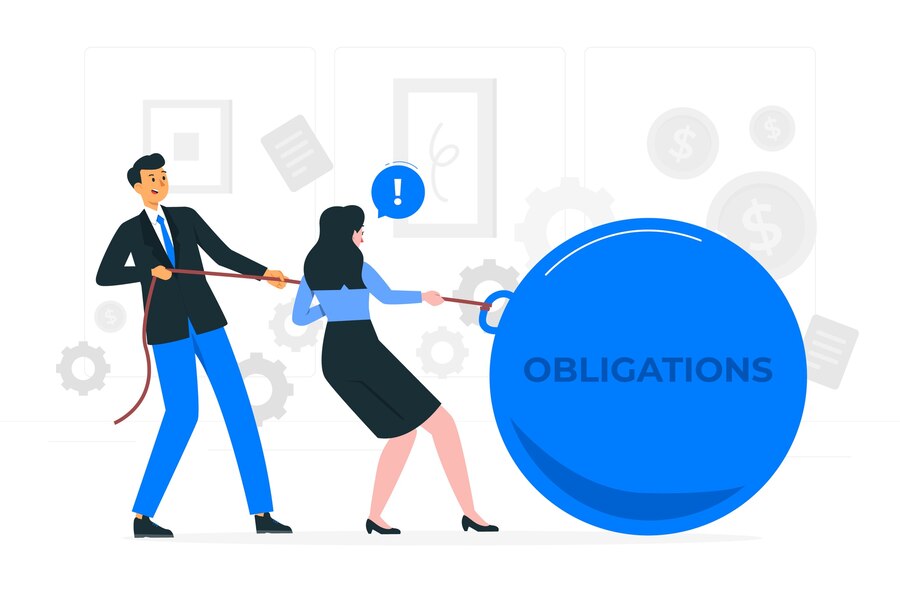A Strategic Staffing Plan with Workflow Automation Tools
Develop a Strategic Staffing Plan With Workflow Automation Tools
The right people in the right roles at the right time are essential in today's fast-paced and competitive business environment. A strategic staffing plan is helpful in this situation. To guarantee that your company has the workforce it needs to meet present demands and future objectives, a strategic staffing plan is a thorough road map.
To promote growth and sustainability, more is required to fill positions; you also need to match your staffing plans with your long-term corporate goals. A strategic staffing plan's primary goals are to predict workforce requirements, spot skills gaps, and create a talent pipeline to maintain business operations. It is a proactive strategy that enables companies to lower turnover, increase overall productivity, and adjust to changes in the market.
However, developing and sticking to an efficient strategic staffing plan can take time and effort, particularly for companies with shifting demands or heterogeneous team structures.
Role of Workflow Automation Tools
Workflow automation tools are helpful in this situation. They are revolutionizing how businesses handle staffing by automating tedious tasks, streamlining scheduling procedures, and offering data-driven insights for improved decision-making. By utilizing workflow automation tools, companies can optimize employee management, minimize errors, and decrease manual workloads. These tools enable businesses to remain flexible, practical, and ready for any obstacles that may arise, from workforce planning software to automated staff scheduling.
The following sections will detail a strategic staffing plan, its importance, and how workflow automation tools can help you advance your workforce strategy.
What is a Strategic Staffing Plan?
A strategic staffing plan is an innovative framework synchronizing an organization's workforce with its business goals. It is a methodical approach to guaranteeing that the appropriate number of qualified workers are available when and where they are needed, not just hiring to cover quick openings. By predicting the needs of their workforce and filling any gaps, companies can increase productivity, adaptability, and long-term success.A strategic staffing plan aims to answer essential queries like these at its foundation.
- For ongoing and upcoming projects, what roles and competencies are necessary?
- How do we draw in and hold on to top talent?
- What assets are required to fulfill organizational objectives?
Key Components of a Strategic Staffing Plan
Analysis of The Workforce
Analyzing the workforce entails assessing the company's personnel as of right now. In addition to determining any gaps or remnants, this entails evaluating the current workforce's performance, productivity, and skill levels. To help direct this process, tools such as workforce planning software can offer insightful data.
Planning For The Future
The primary goal of future planning is to predict the organization's workforce requirements in light of future projects' growth objectives and market shifts. This entails coordinating talent acquisition tactics with long-range business goals to ensure the company is prepared to handle expected and unforeseen demands.
Development of Talent
Talent development strongly emphasizes upskilling and nurturing current employees to prepare them for changing roles. Offering leadership development programs, mentoring, or training courses could be one way to create a strong internal talent pool.

Why Businesses Need a Strategic Staffing Plan
Adapt to Market Changes
Organizations can minimize disruptions and react swiftly to shifting market demands by anticipating workforce fluctuations in advance.
Reduce Costs
Appropriate staffing prevents understaffing, which can result in burnout and decreased productivity, and overstaffing, which can raise costs.
Encourage Growth
As businesses grow, a well-defined staffing plan guarantees that a skilled and sizable workforce will fuel expansion.
Increase Retention
Companies can improve employee satisfaction and lower turnover costs by implementing workforce planning and talent development strategies.
A well-thought-out strategic staffing plan is essential for business, not just HR. It's an active strategy that ensures companies stay competitive and ready for the future by coordinating talent management with organizational objectives.
Why Workflow Automation Tools are Essential in Staffing
Managing staffing procedures can be difficult in today's rapidly changing workplace. The manual workload, which includes forecasting workforce needs and tracking employee schedules, can be too much for even the most seasoned teams. Workflow automation tools offer a solution by decreasing repetitive tasks, increasing overall efficiency, and simplifying staffing procedures.
What Are Workflow Automation Tools?
Workflow automation tools are software solutions designed to automate routine tasks, enhance communication, and simplify complex workflows. They integrate seamlessly into staffing processes, enabling businesses to manage employee scheduling, task delegation, and performance tracking with minimal manual effort. These tools use advanced algorithms and data analytics to provide actionable insights, ensuring that decision-making is data-driven and precise.
Benefits of Integrating Workflow Automation Tools in Staffing
Decreasing the Amount of Manual Labor.
Routine manual tasks like processing shift changes, managing timesheets, and updating schedules are no longer necessary, thanks to workflow automation tools. By automating these procedures using time tracking software, HR teams can concentrate on strategic projects like talent acquisition and development.
Increasing Output
Automation tools significantly increase productivity by simplifying task management and offering real-time updates. For instance, tools such as OpsCheck the Best Workflow Management Software enable managers to effectively monitor and modify staffing plans, guaranteeing the best possible resource allocation and reducing delays.
Increased Productivity in the Workplace.
Centralizing workforce data and simplifying communication automation tools increase office productivity. These tools, which include functions like task prioritization, performance tracking, and automated notifications, ensure that team members are informed and on the same page regarding company objectives.
Smarter Workforce Planning
Through integration with workforce planning software, automation tools offer essential insights into workforce trends, including staffing requirements and employee performance metrics. This data facilitates more intelligent and efficient workforce planning by assisting businesses in making well-informed decisions regarding hiring training and resource allocation.
The Link Between Automation nd Office Productivity
Workflow automation tools are essential for raising office productivity. They ensure regular operations continue without interruption while allowing managers to concentrate on high-value tasks. Automated notifications and real-time updates help to avoid mistakes like scheduling shifts twice or forgetting essential deadlines. Furthermore, automation tools improve employee satisfaction by creating a more connected and efficient workplace. The workforce is happier and more productive due to fewer employees experiencing burnout or scheduling conflicts. It is now imperative and not optional to integrate workflow automation tools into staffing procedures. These tools help businesses stay competitive in a world that is changing quickly by streamlining operations and enabling them to adapt to changes rapidly. Using OpsCheck and other workforce planning software is the best action for businesses looking to increase productivity and scalability.
Step-by-Step Guide to Developing a Strategic Staffing Plan

Assess Current Workforce Needs
Assess your company's workforce to determine its makeup competencies and productivity levels. This includes Analyzing your current team's strengths and shortcomings by conducting skills audits and evaluating performance attendance and overall contribution to business goals using tools such as workforce planning software. Point out positions with too many or too few employees and look for patterns like high turnover in particular roles. Modern workforce planning software makes data visualization through dashboards possible, aiding in finding trends and areas for improvement.
Define Future Workforce Requirements
Focus on predicting future requirements based on business objectives, market trends, and growth projections after the current situation is well understood. Specify both immediate and long-term staffing needs. For example, while long-term goals might center on developing leaders or breaking into new markets, short-term goals involve filling vacancies. Automate staff scheduling software to estimate the number of workers required precisely.
These tools employ predictive analytics to predict the number of employees needed during periods of high demand, such as product launches or peak seasons. Consider developments that could affect staffing, such as automation of remote work or new legal requirements.
Bridge the Gap
Addressing the gaps is the next step after you have a clear picture of your workforce and where it should be. Determine training needs and monitor professional development program progress using best employee management software. If you upskill, your workforce will stay competitive and align with your long-term objectives. Create recruitment strategies for particular skill sets for positions that cannot be filled internally. Automation tools that manage applications and filter candidates can expedite this process. Use technology to cut down on ineffective communication shift management and onboarding.
Monitor and Adjust the Plan
A strategic staffing plan must be continuously reviewed and modified to remain effective. Workflow automation solutions offer up-to-date information on employee productivity, staff performance, and absenteeism. Examine these metrics regularly to ensure the plan is accomplishing its goals. Get feedback from managers and staff members to identify problems or areas where your staffing strategy needs improvement. Review your plan as your company's objectives change to ensure staffing levels, skill sets, and resource allocation align with them.
Top Workflow Automation Tools for Strategic Staffing
Incorporating the right workflow automation tools can significantly enhance the efficiency and effectiveness of your strategic staffing plan. These tools streamline tasks like scheduling and recruitment and integrate seamlessly with workforce planning software to provide actionable insights. Below are some of the top tools that can revolutionize your staffing processes:
1. OpsCheck
Best Workflow Management Software
OpsCheck is a versatile tool that optimizes workforce management through task automation and advanced analytics.
Key Features:
- Real-time dashboards for monitoring team performance and productivity.
- Task automation to reduce manual workload and errors.
- Seamless integration with workforce planning software for data-driven decision-making.
Best For:
OpsCheck is ideal for organizations seeking a centralized solution for staffing operations, including shift scheduling, performance tracking, and compliance monitoring.
2. Phenom People
Phenom People is a cutting-edge platform for talent acquisition and workforce optimization. It transforms staffing strategies by combining automation with AI-driven insights.Key Features:
- AI-powered talent sourcing to identify the best candidates.
- Predictive analytics for future workforce needs.
- Employee upskilling and career pathing tools to support internal mobility.
Integration Capabilities:
Phenom People integrates smoothly with workforce planning software, enabling businesses to align recruitment efforts with long-term staffing goals.
Best For:
Organizations looking for a robust recruitment solution and tools to develop internal talent pipelines.
3. Makeshift
Makeshift simplifies employee scheduling and shift management through automation, helping businesses save time and minimize errors.Key Features:
- Automated staff scheduling software for optimized shift assignments.
- Real-time alerts for last-minute changes or shortages.
- Mobile app access is available for employees to view schedules and request changes.
Integration Capabilities:
Makeshift works well with workforce planning software to ensure that schedules align with broader staffing strategies and productivity goals.
Best For:
Businesses with dynamic staffing needs, such as retail, healthcare, and hospitality, where shift planning is critical.
Comparison of Features
Why These Tools Work for Strategic Staffing
These tools enhance automated staff scheduling, integrate with broader workforce planning systems, and provide analytics that drive more intelligent decisions. For example:
- OpsCheck allows managers to oversee all staffing operations in one platform.
- Phenom People bridges recruitment with talent development, ensuring a sustainable workforce.
- Makeshift simplifies scheduling while offering real-time flexibility to handle unexpected changes.
Benefits of Workflow Automation in Staffing

Time-Saving - Automating Repetitive Tasks Like Scheduling
Payroll shift modifications and manual scheduling are frequently labor-intensive and prone to back-ups. By automating monotonous tasks, workflow automation tools streamline these procedures and free up HR teams to concentrate on more strategic priorities. For example, automated staff scheduling tools such as Makeshift generate ideal schedules according to staffing needs, preferences, and availability. Automatic notifications that provide instant updates guarantee that managers and staff are always aware of changes going away, with the necessity for back-and-forth correspondence. By reducing time spent on repetitive tasks, companies can focus their resources on areas that promote innovation and growth. These tasks can easily manage using best HR software.
Error Reduction - Eliminating Manual Errors in Shift Planning
Mistakes in staffing, like scheduling shifts twice or failing to fill essential positions, can cause operational disruptions and lower employee morale. Because workflow automation ensures precise planning and allocation, these problems are reduced. Automated tools lower the likelihood of conflicts and non-compliance by accounting for limitations like individual preference, labor laws, and overtime limits. Automation systems provide managers with real-time alerts about possible conflicts like overlapping shifts or open positions so they can be promptly resolved. Organizations can increase productivity and ensure seamless operations even during busy times by eliminating manual errors.
Improved Office Productivity - Real-Time Updates and Task Delegation
Workflow automation tools combine staffing tasks into one system, encouraging improved teamwork and communication. With the help of real-time updates from programs like OpsCheck, managers can swiftly make well-informed decisions by monitoring staffing metrics on live dashboards. Automation systems optimize task delegation by allocating duties according to individual skills availability and workload. The end effect is a more harmonious and effective workplace where managers and staff can concentrate on their responsibilities without being distracted by paperwork. These advantages raise employee retention and satisfaction while also increasing efficiency.
Common Challenges in Staffing and How Automation Solves Them

Sudden Staff Shortages
Unexpected absences, such as sick leaves or no-shows, can leave critical positions unfilled, affecting overall operations and customer service.
Solution: Real-Time Alerts and Task Reallocation
Workflow automation tools provide real-time alerts when gaps in staffing arise, allowing managers to respond quickly.
- Automated Staff Scheduling Software: Tools like Makeshift can instantly identify available employees and reallocate tasks to cover all shifts.
- Proactive Planning: Predictive analytics offered by tools like Phenom People help forecast potential shortages, enabling proactive measures like hiring temporary staff or redistributing workloads.
Inaccurate Scheduling
Manual scheduling is prone to errors, such as overlapping shifts, overstaffing, or understaffing. These mistakes can lead to inefficiencies, higher labor costs, and employee dissatisfaction.
Solution: Optimized Employee Scheduling
Automation tools eliminate human error by generating accurate schedules based on predefined rules and real-time data.
- Features of Tools Like OpsCheck: Automatically optimize schedules while considering employee preferences, legal requirements, and operational demands.
- Dynamic Adjustments: Real-time updates ensure that schedules remain accurate, even when changes occur, such as shift swaps or last-minute absences.
Lack of Insight into Performance Metrics
With visibility into workforce performance, businesses can identify inefficiencies, track productivity, or make informed staffing decisions.
Solution: Data-driven insights with Workflow Automation Tools
Automation tools integrate workforce planning software to provide detailed analytics and reports on key performance indicators.
- Performance Dashboards: Tools like Opscheck offer centralized dashboards that track attendance, task completion rates, and overall productivity.
- Actionable Insights: Data visualization features help managers identify patterns, such as underperforming departments or high turnover rates, and take corrective action.

